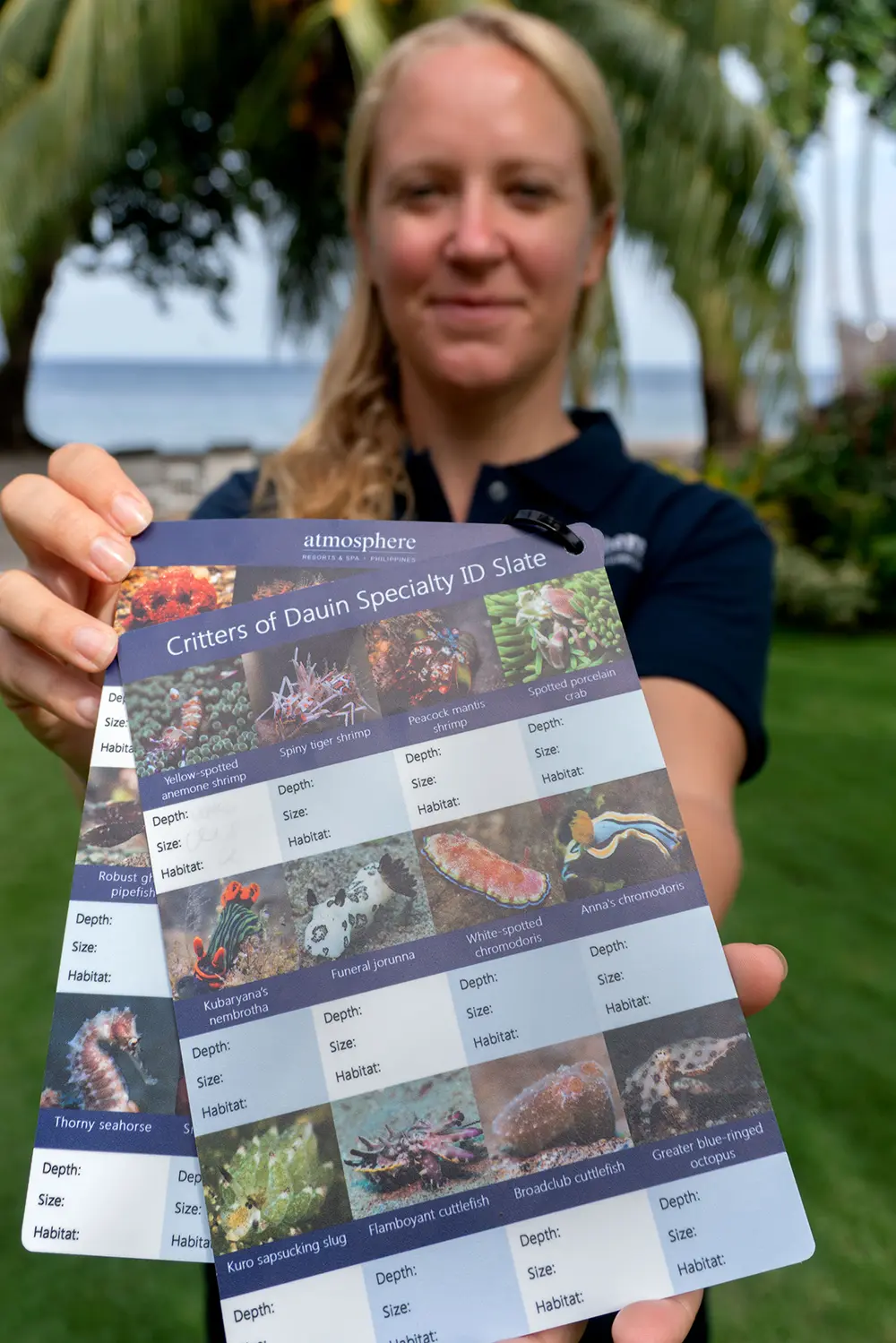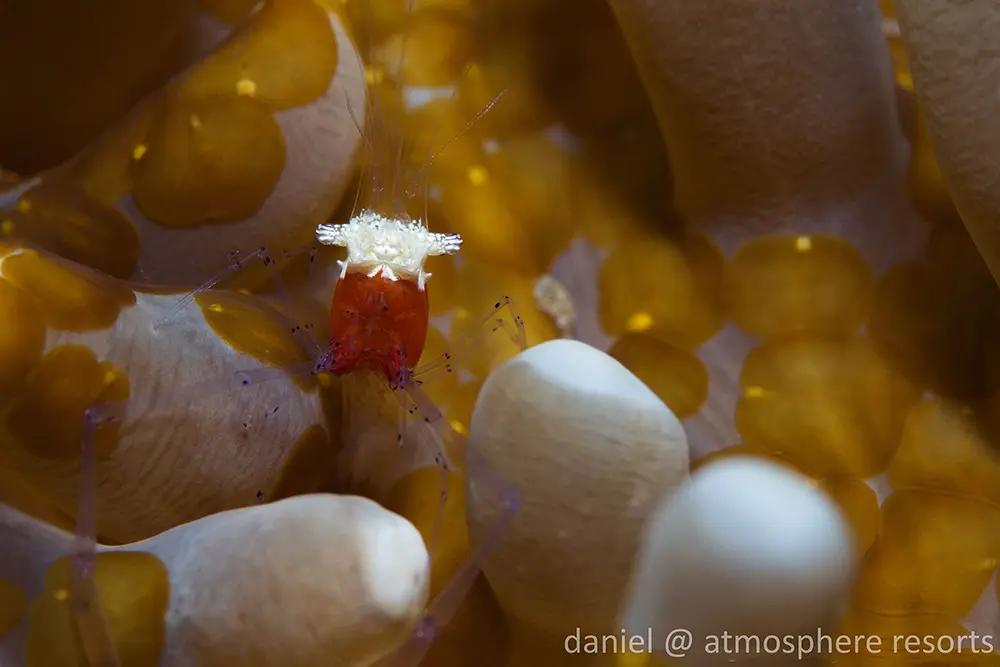Last month our marine biologist, Kirsty Richards, launched the new (and exclusive) PADI Critters Specialty course at Atmosphere.
I’ve always loved collecting things, whether it is Polaroid photographs, Pokémon cards or PADI Specialties. When I discovered that at the end of this particular specialty, I’d be better able to find a spotted porcelain crab, or an ornate ghost pipefish – I was sold. Despite being in from the get-go, I had to patiently wait my turn as the course has been an instant hit at Atmosphere.

My Instructor Kirsty with her Critter slates
Marine Biology 101
One balmy October evening, we communed for the first part of the Critters of Dauin PADI Specialty course, the knowledge development. Starting at the very beginning, Kirsty ran through the fundamentals. I assume it was Marine Biology 101 – though most of it was new to me. Moving through clearly defined sections, we got the lowdown on crustaceans, gastropod molluscs, cephalopods, echinoderms and fish (including seahorses & pipefish). Kirsty clearly knows her critters, and my (many) questions were answered with thoughtful and detailed responses. On top of the serious stuff, I picked up tons of fun facts. To access them, you’ll have to sign up for the course, or challenge me to a critter-themed trivia competition. The session was rounded-off with some interesting information about muck diving, and why the Dauin coast is such a unique dive area. There is a meaningful focus on how to best interact with critters, whilst minimizing our potential impact on their environment. There is also that all important nitty gritty of where to find them, and how!
Cruising for Critters
The next morning, the search was on! Four critter hunters, plus our back-up in the form of eagle-eyed guide Arjay, and Critter-Coach Kirsty, headed south to see what we could encounter.
Our first site was classic muck, with a few reefy areas – not quite as hard-core as some of the infamous Dauin sites. I remembered and recognised the characteristics of the seven species of anemone fish that live on the coastline. I even found five of them! Memorably, I also learned to look beyond the anemone, that’s a habitat I’ve definitely overlooked in the past. Certain sponges and corals were suddenly jumping out at me – perfect for a giant frogfish, or a ringed pipefish. Cracks and crevices too; hiding a snowflake moray, with a fimbriated moray living next door.

The anemonefish species of Dauin
Our surface interval was full of good-humoured banter between us students, competing to see who had found the most critters. My 15 logged blue linkia sea stars didn’t seem to get me the prestige I was expecting. I did round it off with a pair of yellow spotted anemone shrimp though and that did the trick. Everyone had something unique, that they had managed to find solo – whether it was a ribbon eel, a peacock mantis shrimp or a juvenile painted frogfish.
The second critter-dive
Our second dive was no disappointment either. Having a critters slate in the water was a game-changing reference point, plus it’s a nifty freebie you get to keep afterwards. The slate reminded me what to look for when I got off-track, and helped me differentiate between a thorny and an estuary seahorse. It also proved handy to write down some of the critters I couldn’t ID in the moment. That’s how I know I found my first popcorn shrimp.

Popcorn shrimp in a mushroom coral , an exciting first find!
Back at the Dive Centre, with Kirsty and some ID books handy, we debriefed and downloaded photos, compiling our full list of critters. The final tallies are recorded in the extensive Atmosphere Critter Log. Historically, it shows the presence of certain species at particular dive sites, and what time year they might be more prevalent.
Final Thought(s)
On reflection, participating in the course seemed to open up the sites we dived. I felt that each location unfurled before my eyes, more alive and visible than before, full of possibilities. It was an adrenaline-filled treasure-hunt. I’m eager to continue using my newfound skills diving on the Dauin coast. I’ll have a renewed perspective for these little alien critters and where they’re hiding; learning from the incredible guides who found way more than I did in each 60-minute period.
Katherine Stevens







